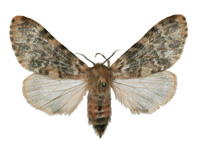Abstract
A new species, Culicoides paradoxalis Ramilo and Delécolle (Diptera: Ceratopogonidae), is described from specimens collected in France (Corsica and southeast region) and Portugal. This species resembles Culicoides lupicaris Downes and Kettle, and can be distinguished from this species and from Culicoides newsteadi Austen by its wing pattern, in addition to the absence of spines on the tarsomere 4 of female mid leg. In male, the presence of two appendices on the sternite 9 together with the absence of sensilla coeloconica on the flagellomere 11 is also useful to distinguish these three species. Separation from other members of the Culicoides subgenus is confirmed by the analysis of the Cytochrome Oxidase I (COI) mitochondrial marker.

